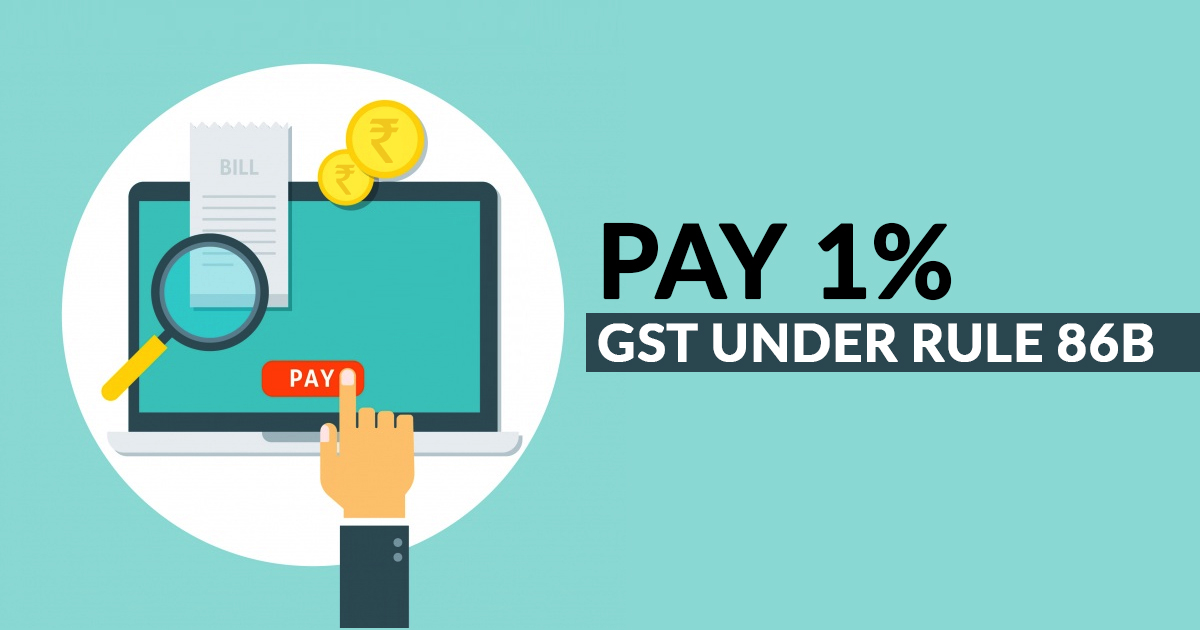
Goods and Services Tax (GST) introduce Rule 86B. This rule, under Notification number 94/2020 dated 22nd December 2020, came into effect from 1st January 2021. Its primary purpose is to limit the use of input tax credit (ITC) available in the electronic credit ledger for discharging the output tax liability, thereby having an overriding impact on all other CGST Rules.
Understanding Rule and its Applicability
Under the purview of Rule 86B, a restriction has been imposed on registered persons whose taxable value of supply (excluding exempt supply and zero-rated supply) in a month exceeds Rs.50 lakh. Therefore, before filing each return, businesses need to assess whether their monthly taxable supply surpasses the stipulated limit.
This rule restricts such registered persons from using ITC in excess of 99% of their output tax liability. To break it down, more than 99% of the output tax liability cannot be discharged by utilizing the input tax credit.
Exemptions to Rule
While the restriction might seem stringent, it does come with a set of exceptions. The rule does not apply in the following scenarios:
1. If the registered person, proprietor, karta, managing director, any of the partners, whole-time directors, or any other person, have individually paid more than Rs.1 lakh as Income Tax under the Income Tax Act, 1961.
2. If the registered person has received a refund of more than Rs.1 lakh in the preceding financial year due to export under LUT or because of an inverted tax structure.
3. If the registered person has discharged their liability towards the output tax by electronic cash ledger for an amount exceeding 1% cumulatively of the total output tax liability up to the said month in the current financial year.
4. If the registered person is a government department, public sector undertaking, local authority, or statutory authority.
Impact on Businesses and Working Capital
After a detailed look at the restrictions and exceptions under Rule 86B, it is evident that the rule primarily affects large taxpayers, while micro and small businesses remain largely unaffected.
The primary objective behind the introduction of this rule is to control the issue of fake invoices and the misuse of fake input tax credit to discharge liability. It serves to deter fraudsters from overstating turnovers without sufficient financial credibility.
The CBIC has further clarified that the 1% restriction should be calculated based on the tax liability in a month and the turnover of that particular month.
Illustration: Rule 86B in Practice
For a practical understanding, let’s consider a scenario: Mr A, a taxpayer, makes a sale of goods valued at Rs. 1 crore, which attracts a tax rate of 12%. As per Rule 86B, he can discharge his liability up to 99% through ITC, which means he must pay Rs. 12,000 in cash.
While this rule might seem inconvenient for genuine taxpayers, the Government’s objective is to prevent fake invoicing and, in the long run, curb tax evasion.
In conclusion, while Rule 86B brings with it new restrictions, it also serves to protect the integrity of the tax system by preventing fraudulent activities. It is a step towards a more transparent, compliant and efficient GST regime in India.
This article is only a knowledge-sharing initiative and is based on the Relevant Provisions as applicable and as per the information existing at the time of the preparation. In no event, RMPS & Co. or the Author or any other persons be liable for any direct and indirect result from this Article or any inadvertent omission of the provisions, update, etc if any.
